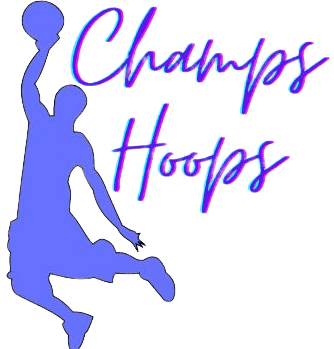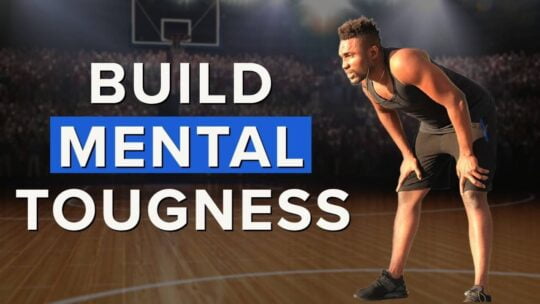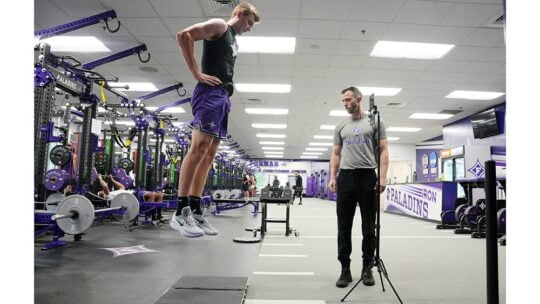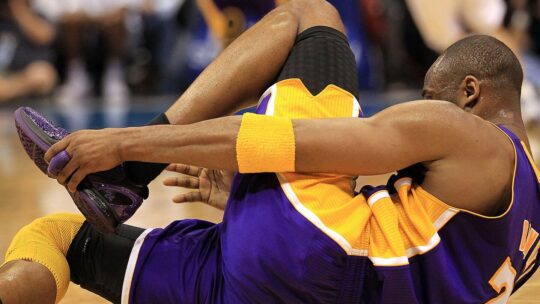What is Basketball Conditioning
It would be difficult to estimate the number of games that have been won or lost because one of the teams playing was in better condition than the other. It is difficult to find an excuse that will justify losing a game for this reason.
The opponent may have superior talent available but both teams possess the same opportunities for “getting into shape.” Few players will reach peak physical condition unless expertly guided by the coach. Thus, plans for an upcoming basketball season must include proper drills and procedures to ensure maximum squad conditioning.
Mental Condition
Much of the success of a basketball team certainly depends on the overall mental condition of the team. An overwhelming desire to win, a sense of pride in conditioning, and a burning love for the game can inspire players to efforts far greater than their bodies would be able to produce otherwise.
John McLendon, former coach at Tennessee State and now in the professional ranks, tells an amusing story about mental conditioning. He says that he told his players at State: “Boys, it’s five miles to the courthouse in downtown Nashville. Now suppose you ran every step of the way from the State campus to the courthouse.
What would you do when you got there? You’d throw yourself down on the inviting grass of the courthouse lawn utterly exhausted. But what would you do if a fierce tiger suddenly burst forth from out of the nearby shrubbery? Why, you’d run every step of the way back. So boys, just remember, the State basketball player never gets tired.”
Though physical condition must go jointly with mental condition, the importance of the proper frame of mind to overall team conditioning cannot be minimized. The body can do more physically when the player believes it can and desires it to do more. The four-minute mile barrier is a superb example of what can be done when athletes recognize mentally that the body is capable of greater things.
When Roger Bannister ran the first mile in under four minutes, he did something that hundreds had attempted for years. In the few short years since that great feat, however, the mile has been run in sub-four minute time well over forty times. Players must be convinced of the need to give that extra effort and must develop the desire to give this extra effort willingly.
Mental conditioning requires more than confidence and a desire to excel. It requires an attitude from each player that will contribute to the success of the team. Team play is never enhanced by petty jealousies and bickering among players.
Nor does team or individual play improve when attitudes toward the coach and his criticisms are faulty. The team with high morale, genuine friendship among players and the coach, and confidence in their ability to succeed is destined for championship play.
Physical Conditioning
The body must be physically conditioned to exert maximum effort throughout the long basketball season. Prime physical condition not only enables players to give their best efforts all of the time but improves their ability to perform individual and team fundamentals and reduces injuries.
Pre-practice Conditioning. A program of conditioning before the opening of practice sessions can be very beneficial. Activities conducted outside the gymnasium can prepare the body gradually for the rigorous work in the gymnasium.
The feet can gradually be toughened on a surface less hard than the gymnasium floor thereby reducing the occurrence of blisters. The outdoor surface can aid in conditioning the legs for work on the hardwood and reduce shin splints.
Activities that may be used in a pre-practice conditioning program are:
- Calisthenics.
- Cross-country running.
- Speedball.
- Volleyball.
- Two-man Volleyball (Two players on each side. Regular volleyball rules apply.)
- Weight training.
Preseason Conditioning. Most teams practice six weeks before their opening game. During this practice period, drills must be used to allow players to attain a top-condition level before the opening game. Full-court running drills, pressing defensive drills, and drills incorporating quick starts and stops are excellent conditioners. Several excellent conditioning drills are diagrammed at the end of this chapter.
It usually is better to start relatively light during the first few practice sessions and progress toward harder practice sessions as the legs and feet become conditioned to the hardwood. Many coaches like to think of themselves as tough conditioners and try to “pour it on” their players during the first few days of practice.
If the coach is making the unfortunate mistake of inflating his ego through the acquisition of the “tough” label, he well may do his players more harm than good. It is far better to postpone the harder practice sessions until players are physically ready to participate in them.
In-season Conditioning. The body should be thoroughly conditioned before the opening game. After the season begins, it will be seldom necessary to plan practice drills designed to maintain condition. Playing two or three games weekly usually will maintain conditioning. Practice sessions should be devoted solely to improving fundamentals and team offensive and defensive play.
One of the conditioning problems facing the coach is the conditioning of reserves after the season gets underway. There will be many games in which these reserves will play little, if any. If they play for a few minutes, it probably will be insufficient to maintain their condition. Light practice the day before games, no practice on game days, and sitting on the bench throughout a game can only result in a regression in conditioning unless the coach plans special measures to combat this.
Probably the best answer to this problem is to work these reserves overly hard on days immediately following games. The starters may be allowed to leave practice early and those reserves who saw little action in the preceding night’s game may be allowed to full-court scrimmage to maintain physical condition.
Staleness
Staleness is chiefly a mental condition characterized by sloppy sub-par play and a decline in enthusiasm. It may affect individuals or the entire team. Chief causes of staleness are overwork in practice, fatigue, and lack of sleep. The existence of plenty of rest and sleep is essential. Easing up in practice sessions and the use of competitive drills in practice will help correct the condition.
If the schedule permits, the players should be given one or two days off from practice. Often they return to practice with early-season vigor and hustle. As precautionary measures, give the players a laxative to guard against constipation and check their diet to make certain that improper foods are not being eaten abundantly.
Care of the Feet
Because a basketball player must be prepared for the numerous starts and stops necessary to perform well, the care of the feet becomes one of the most important parts of the conditioning program. A player cannot be expected to perform at his best if he is hampered by the pain of blisters.
It is far easier to prevent blisters than to heal them. A program of prevention begins with the proper fitting of shoes and socks. Socks should be all wool. Cotton socks cause friction that leads to blisters.
An outside conditioning program before the opening of basketball practice can be a valuable aid in the gradual toughening of the feet. As practice begins, workouts should progress from the light to the more difficult as the feet gradually toughen. Players should paint the bottoms of their feet daily with a tincture of benzoin.
- Treatment of Blisters:- Once the blister has formed, it should be opened and the dead skin cut away with sterile scissors. It should then be saturated with an antiseptic. After it is dry, apply athletic ointment and cover with a gauze pad. To allow the player to play when he is bothered by blisters, cover any blister by taping a “doughnut” cut from moleskin or sponge rubber over it.
- Care of the Ankles:- The sprained ankle is one of the most common injuries in basketball. Taping the ankles daily is the best method of prevention. However, few budgets and training facilities allow for daily ankle taping of all players. Ankle braces can be a reliable substitute. The braces are relatively inexpensive and players can wrap their ankles after a little instruction.
If an ankle sprain occurs, it should be wrapped in an elastic bandage and an ice pack applied immediately to reduce swelling. After application of the ice pack for thirty minutes, the ankle should be X-rayed for detection of any break. The opinion of the coach or trainer is never satisfactory here for it is impossible to judge whether or not the ankle is broken.
After it is determined by X-ray that the ankle is not broken and twenty-four hours have elapsed, heat should be applied. This can be in the form of whirlpools, heat lamps, ultrasonic sound waves, or analgesic packs. When the player can return to play, the ankle should be taped at every practice session and game for the remainder of the season.
- Shin Splints:- The occurrence of shin splints can be very painful to the basketball player and hamper greatly his performance. They are usually caused by improper warm-up and too much running and jumping on a hard surface. Again, prevention is better than any cure. An adequate warm-up is essential. Players who have had previous trouble with shin splints should rub analgesic balm on their shins and wear knee socks. As mentioned previously, working out-of-doors before the opening of practice can prepare the legs for work on the hardwood.
Rest is the best cure for shin splints after they occur. The whirlpool and analgesic packs are invaluable. A small, thin layer of sponge rubber should be placed in the heel of the shoe to help absorb shock when landing on the floor after jumping. Particular trouble in some cases should be taped.
Diet
Most of our players today live in homes where diets are adequate. Thus, few rules regarding diet are necessary. In general, the player who eats regular meals avoids an excess of fried foods and rich desserts, and holds between-meal snacks to a minimum will receive a proper diet. In instances where a faulty diet is suspected, a talk with the player may point to methods of improving it. If necessary, vitamin tablets and food supplements should be purchased for these individuals.
Pre-game Meal. Coaches’ opinions regarding the pre-game meal vary from poached eggs and dry toast to broiled steak or roast beef. Most medical doctors today insist that specific pre-game diets are unnecessary so long as the meal is eaten at least four hours before game time to allow for digestion. To be safe, fried foods should be avoided since they are not as easily digested as other foods. An excellent pre-game nutrition diet is:
- Roast Beef or Broiled Steak
- Baked Irish Potato
- Green Peas
- Dry Toast
- Fruit Cocktail
- Hot Tea
Conditioning Reminders
- Each member of the team must be convinced of the importance of mental and physical conditioning to the success of the team.
- An outdoor conditioning program before practice begins can be valuable in readying the body for the strenuous exertion necessary when actual indoor practice begins.
- Conditioning drills should be used a great deal in early practice sessions and should be gradually tapered down as the season approaches.
- Early practice sessions should be relatively light until the feet and legs have become conditioned to the hardwood.
- Two full-court scrimmages weekly are sufficient in the pre-season conditioning program. After the season begins and when two or three games are played weekly, the little scrimmage is necessary except for the little-used reserves.
- Plan to give players a day off occasionally to combat staleness.
- Make certain that each player wears shoes and socks that are of the correct fit. Avoid cotton socks.
- Blisters can be prevented more easily than they can be healed.
- The importance of adequate sleep and the avoidance of tobacco and alcoholic beverages can never be overstressed.
- Ankle wraps can be used inexpensively and will reduce ankle injuries.
- All ankle sprains should be X-rayed to detect breaks.
- When a sprain occurs, wrap the ankle with an elastic bandage and apply a cold pack. After twenty-four hours, apply heat.




